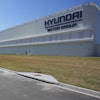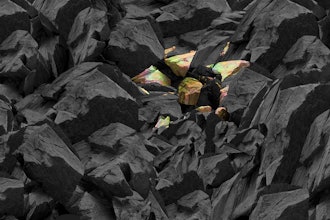When working with corrosives, drenching facilities should be readily available. These drenching facilities could include an eyewash, eye/face wash, shower or combination eye/face wash shower depending on the amount of possible exposure. For example, if there is a possibility an employee could come in contact with a hazardous chemical, OSHA Code of Federal Regulations (CFR) 1910.151(c) requires that the facility have a full drench shower available.
OSHA defers to the American National Standards Institute (ANSI) Z358.1 standard for the requirements of portable and plumbed emergency eye, eye/face wash and emergency shower equipment. This includes construction, testing, water pressure, flow requirements, location, operation and maintenance. An ANSI approval label on the equipment shows that the manufacturer's product meets ANSI specifications.
Emergency eyewashes and showers often go unused, so it's criticial to test these devices regularly to help ensure they will function properly in an emergency. Studies show that the seconds immediately following an eye injury or chemical splash are often critical to minimizing damage.
The American National Standards Institute (ANSI) developed a standard specifically for eyewashes and showers. Standard Z358.1-2009, states that "emergency eyewash and shower equipment shall be located on the same level as the hazard, have un-obstructed access (a door is considered an obstruction), and require not more than 10 seconds to reach." Z358.1-2009 also outlines specific locations and flow rates for these devices—a section of the standard that is often overlooked is the testing and maintenance of these devices and the training of employees in their proper use.
The quality of flushing fluid is often an overlooked item and is important for a number of reasons. Most important, the presence of foreign particles or unacceptable levels of microorganisms can result in further injury to the eye. Moreover, debris can either reduce or restrict the flow of the flushing fluid by obstructing nozzles, pressure-regulating devices and pipes that feed plumbed units and filters.
Flushing fluid should be clear and visibly free from foreign particles. The presence of off colors or contaminants is an indication of poor fluid quality in the supply line or in the water source. Contaminants can enter a self-contained eyewash via a biofilm on the inside of the station or through openings in the unit.
There are also requirements for the flow of fluids to eyewashes and showers in the ANSI standard. These are minimum flow rates that must be met to make the equipment work as it was designed, pass possible OSHA inspections and provide relief in case of an accidental splash. Each piece of equipment has a different flow requirement. Plumbed and Self-Contained eyewashes require a minimum flow of 0.4 gallons per minute (GPM) for 15 minutes of flush. Plumbed Eye/Face washes require a minimum flow of 3.0 GPM and combination showers and drench showers a minimum flow of 20 GPM for 15 minutes. All eye and eye/face wash units should be aligned so that the fluid provided flushes the eye and/or face simultaneously. If shut-off valves are installed in the supply line, provisions should be made to prevent unauthorized shut off. According to the ANSI standard, these units should be inspected annually to make sure they continue to meet the flow requirements.
Tears generally have a pH of 7.4 and possess some buffer capacity. Ideally, the flushing fluid in an emergency eyewash device should have a pH close to 7.4 as well as a saline content similar to the fluid in the eye. If the pH is too low or too high the water may not be suitable for use as a flushing fluid. Click here for pH meter options.
To ensure that your eyewash stations and showers are always ready when you need them, it is important that the requirements for test procedures and maintenance set forth in Z358.1-2009 are followed. The American National Standard for eyewashes and showers provides minimum requirements for these units to function properly.
The requirements for testing and maintaining any of the eye, eye/face washes and showers is based on the manufacturers instructions and ANSI requirements. Generally, the manufacturer’s instructions state that the units should be inspected, tested and recorded weekly". Individual owner manuals should be looked at for the specific manufacturer's guidelines. The ANSI standard Z358.1 5.5.2 states that plumbed eyewashes, eye/face washes and showers "...should be activated weekly for a period long enough to verify operation and ensure that the flushing fluid is available.” While activating plumbed eyewashes, eye/face washes and showers, you should also verify that they are providing luke warm tepid water (between 60°-100°F). Self-contained eye washes obviously cannot be activated weekly without using up valuable solution, so ANSI recommends visually inspecting the unit to see if the fluid needs changing or supplementing. Identify testing and maintenance of eyewash and shower stations with eyewash inspection tags.
Plumbed and self-contained units shall also be inspected and maintained in accordance with the manufacturer's instructions. For eyewashes, this includes protecting the nozzles and flushing fluid against airborne contaminants. Although not specifically stated, it's prudent to check the fluid levels and activation device of self-contained eyewash units every week. The flushing fluid of self-contained units must also be changed periodically. Table 1 provides replacement schedules for eyewash flushing fluids.
Flushing Fluid Type | Recommended Replacement Schedule |
| Tap water only | Weekly. |
| Tap water mixed with a manufacturer's preservative | Test mixture to identify bacterial loads and determine a maintenance cycle. Manufacturer's recommend fluid changes of three to six months. |
| Tap water mixed with a factory-prepared liquid concentrate plus an additive | Same as above. |
| Factory-sealed cartridges | Expiration date of cartridge. |
Other important things to look at during the weekly inspection are the lighting and signage around the eyewash, eye/face wash or shower station. The ANSI standard states that the eyewash station shall be well-lit and have a highly visible sign positioned so it is identifiable in the area it serves.
Most manufacturers provide suggested fluid replacement schedules, however, these are only guidelines. Preservatives are designed to control bacteria levels in flushing fluids but they are not effective against all bacteria. A preservative’s performance also depends upon several factors including the initial bacterial load of the water and a potential biofilm in the station. Self-contained eyewash stations should be drained completely, disinfected and rinsed prior to refilling.
For the annual inspection, flow meters or other measuring devices can be used to make sure the facilitie’s units are in proper working order with the correct amount of flow.
Summary
Always inspect and test the unit if you have any doubt about its dependability. Identify problems or concerns and establish a regular maintenance program. Consult the manufacturer's operating manual and ANSI Z358.1-2009 for assistance with test procedures, maintenance operations and training.
| Q. | Who should be trained on the proper use of emergency eyewashes and showers? | |
| A. | ANSI states that all employees who may be exposed to hazardous materials should be trained on the use of eyewash and shower devices. Specific areas that should be addressed include the location of the units, how to properly activate the systems and how to correctly maintain the devices. | |
| Q. | Are there any recommended procedures on how to effectively flush eyes that have been contaminated? | |
| A. | Individuals should be instructed to hold the eyelids open and roll the eyeballs so fluid will flow on all surfaces of the eye and under the eyelid. | |
| Q. | Are there any alternatives to the frequent changing of gravity-fed eyewash solutions? | |
| A. | Yes. Factory-sealed cartridges containing eyewash solutions are available. These products have shelf lives well in excess of preservative solutions and are significantly easier to maintain. |
For more information from Grainger, please visit their website at www.grainger.com.



















